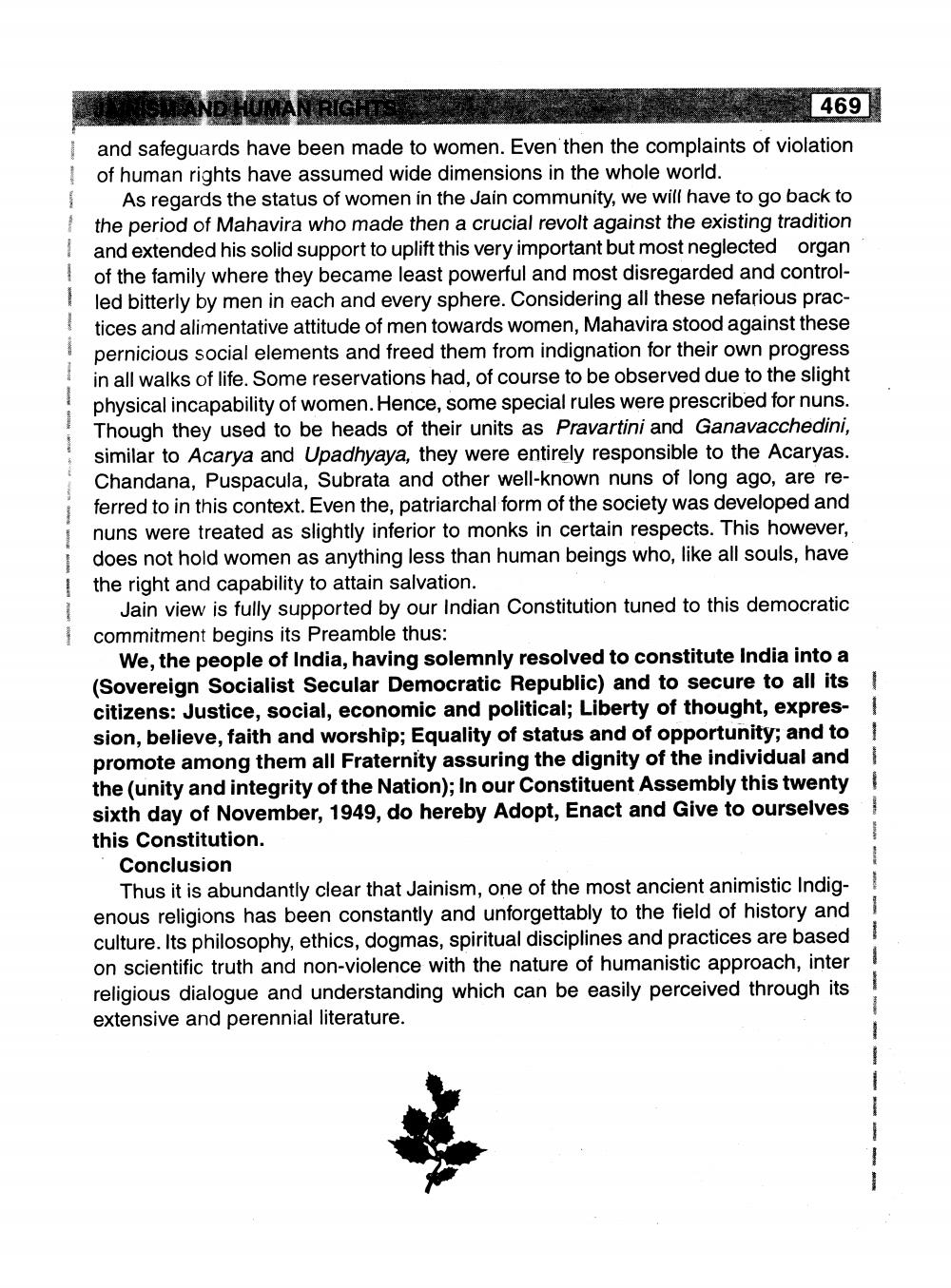________________
AND HUMAN RIGHTS
469 and safeguards have been made to women. Even then the complaints of violation of human rights have assumed wide dimensions in the whole world.
As regards the status of women in the Jain community, we will have to go back to the period of Mahavira who made then a crucial revolt against the existing tradition and extended his solid support to uplift this very important but most neglected organ of the family where they became least powerful and most disregarded and controlled bitterly by men in each and every sphere. Considering all these nefarious practices and alimentative attitude of men towards women, Mahavira stood against these pernicious social elements and freed them from indignation for their own progress in all walks of life. Some reservations had, of course to be observed due to the slight physical incapability of women. Hence, some special rules were prescribed for nuns. Though they used to be heads of their units as Pravartini and Ganavacchedini, similar to Acarya and Upadhyaya, they were entirely responsible to the Acaryas. Chandana, Puspacula, Subrata and other well-known nuns of long ago, are referred to in this context. Even the patriarchal form of the society was developed and nuns were treated as slightly inferior to monks in certain respects. This however, does not hold women as anything less than human beings who, like all souls, have the right and capability to attain salvation.
Jain view is fully supported by our Indian Constitution tuned to this democratic 1 commitment begins its Preamble thus:
We, the people of India, having solemnly resolved to constitute India into a (Sovereign Socialist Secular Democratic Republic) and to secure to all its 1 citizens: Justice, social, economic and political; Liberty of thought, expres- 1 sion, believe, faith and worship; Equality of status and of opportunity; and to promote among them all Fraternity assuring the dignity of the individual and the (unity and integrity of the Nation); In our Constituent Assembly this twenty ! sixth day of November, 1949, do hereby Adopt, Enact and Give to ourselves this Constitution.
Conclusion
Thus it is abundantly clear that Jainism, one of the most ancient animistic Indig- ! enous religions has been constantly and unforgettably to the field of history and culture. Its philosophy, ethics, dogmas, spiritual disciplines and practices are based on scientific truth and non-violence with the nature of humanistic approach, inter religious dialogue and understanding which can be easily perceived through its extensive and perennial literature.




